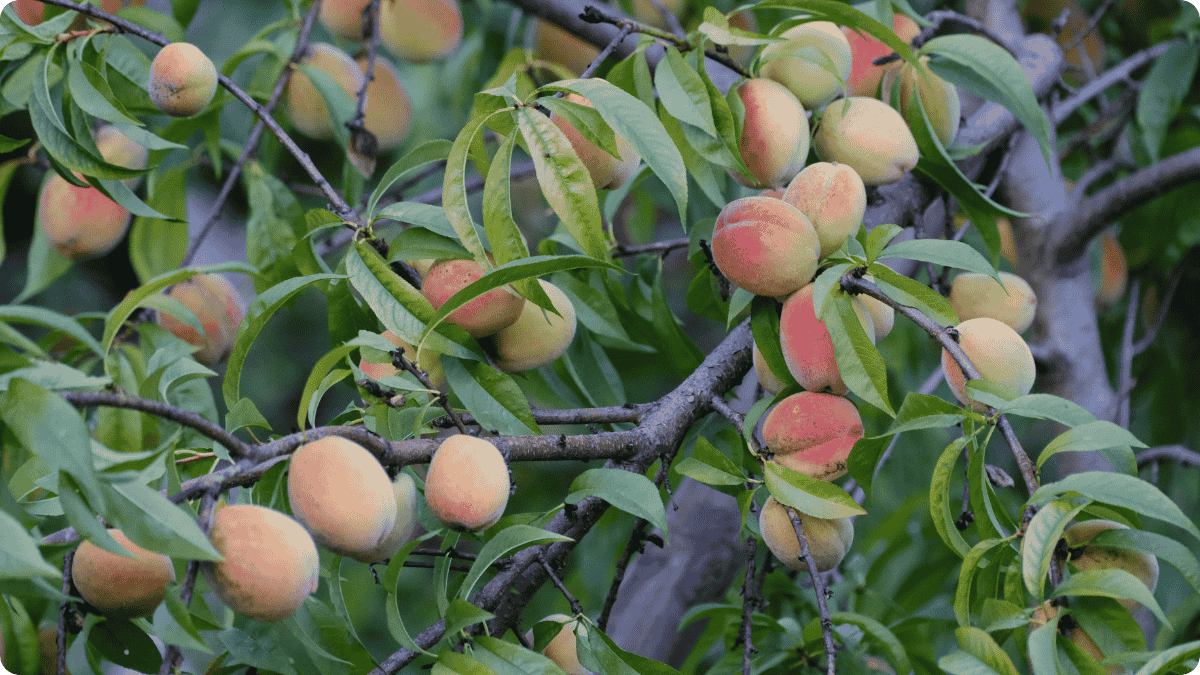Death of Georgia Peaches? How Big Ag Crushed A Southern Icon.
Climate chaos and corporate monocultures turned peaches into a cautionary tale for food security. How here's how Big Ag made the peach supply chain more sensitive than the fruit.
In 2023, Georgia lost more than 90% of its peach crop… the worst wipeout since 1955. South Carolina, usually the nation’s #2 peach producer, lost about 70%. This wasn’t just a bad weather year. It was the collapse of an industrial agriculture system that left our regional food supply as brittle as glass.
When Big Ag builds a house of cards out of monocultures, climate change doesn’t just knock one card loose, it takes down the whole structure. And when peaches disappear, it’s a warning about how fragile our entire food system really is.
What Went Wrong
The root cause wasn’t just about a late frost (that’s the media spin) it was about decades of industrial decisions that made peach crops defenseless.
Climate Chaos: Warm winters in Georgia and South Carolina tricked peach trees into blooming early, only for a hard freeze to wipe out blossoms overnight. In 2023, farmers lost peaches “in the blink of an eye,” as one grower put it.
Monoculture Madness: Industrial orchards relied on the same few peach varieties, all vulnerable to the same weather patterns. When the freeze hit, it was game over everywhere at once.
Corporate Complacency: Big growers shrugged and turned to imports, while smaller orchards faced ruin. Government disaster aid stepped in, but the corporate middlemen stayed silent.
This was not an act of God. It was an act of man playing God resulting in fragility, engineered by a system that values scale over resilience.
The Numbers Don’t Lie
Georgia kept just 5–10% of a normal crop.
South Carolina salvaged only 10%.
Farmers lost an estimated $60–200 million in revenue across the region.
Supermarket peach prices jumped 20–50% nationwide.
Local farmstands were charging as much as $60 for a half-bushel, and still selling out.
And here’s the kicker: climate models show that by 2050, 40% of Southeastern winters may no longer provide the chill hours peaches need. Translation? Without big changes, the Peachocalypse won’t be a rare disaster – it will be the new normal.
How It Impacts Regenerative Farmers
For regenerative farms, the lesson was clear: diversity is survival.
The Jackson family in South Carolina lost most of their peaches but stayed afloat with blackberries, watermelons, and vegetables.
Polyculture farms could pivot; monoculture peach-only farms faced financial ruin.
Communities lost not just fruit, but traditions: peach festivals canceled, cobbler stands shuttered, cultural pride shaken.
This is food freedom under threat. When one shock wipes out an entire crop, who loses first? Local farmers. Local communities. Local consumers.
Corporate’s Response (Or Lack Thereof)
How did Big Ag respond? By trucking in California peaches and South American imports. To corporations, peaches are just widgets. If the South can’t grow them, they’ll buy from somewhere else.
Small farmers had no such safety net. Workers lost wages. Communities lost markets. And corporate giants like Titan Farms leaned on crop insurance, USDA bailouts, and lobbying clout while family farms considered selling out.
The message? Corporate Ag is too big to fail, but too indifferent to save you.
What Regenerative Farmers Are Doing Differently
Regenerative farmers are taking real steps in the orchard are not waiting for corporate salvation. They’re reimagining how peaches (and local food systems) can survive:
Diversifying Varieties: Planting mixes of high- and low-chill peaches to hedge against weird winters.
Intercropping: Blending peaches with pecans, berries, or livestock to keep farms productive even if one crop fails.
Soil Health: Building living soils that buffer frost damage and delay premature blooming.
Local Processing: Freezing, canning, and preserving bumper crops to store resilience for lean years.
Knowledge-Sharing: Farmer networks openly sharing survival strategies instead of hoarding trade secrets.
It’s old wisdom meeting new urgency – and it’s working.
Policy Solutions and Advocacy
If this huge shock to peach production has taught us (hopefully), it’s that policy can’t ignore climate resilience anymore.
Reform Crop Insurance: Make specialty crop insurance affordable for small fruit growers.
Fund Research: Support public breeding programs for climate-ready peaches that don’t get patented by Big Ag.
Back Local Food: Invest in regional storage and processing so surplus years can buffer lean ones.
Break Up Consolidation: Stop letting mega-orchards squeeze out the small farms that carry real resilience.
Farmers are calling for a Southeast Fruit Resilience Task Force and we should all be calling our legislators to make it happen.
The Path Forward
If we keep trusting industrial monocultures, climate change will keep dealing death blows to our food system. But if we embrace regenerative practices (diversity, soil health, local markets) we can rebuild resilience from the ground up.
Imagine a future where Georgia peaches thrive again, not because Big Ag engineered a silver bullet, but because farmers planted diverse orchards, communities backed local food, and policy supported regeneration over consolidation.
That’s not a pipe dream. That’s the Regenaissance.


